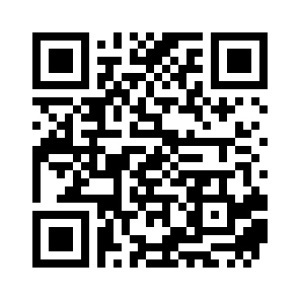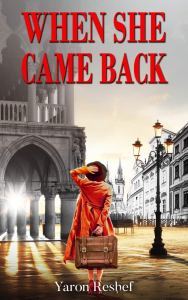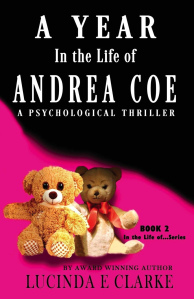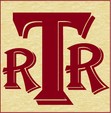T.R. Robinson's Blog, page 5
February 2, 2021
QR Codes and Authors

Advanced technology, smartphones, lightweight tablets, etc., has increased online activity so that it now forms a substantial component of most people’s lives, even those in the retirement bracket. Along with this the use of QR codes has also developed and become an increasingly popular method of connectivity. This article will consider: what a QR Code is (for those who may not know); it’s components; how they are created; how they operate; and how authors may utilise them.
~~~~~~~~~~
QR CodesA QR Code (Quick Response Code) is a two dimensional, machine readable, optical label that has width and height but no thickness. Traditionally they are made up of black squares on a white background though advanced technology has now made it possible to create them in colour. However, readers should note, for a colour QR Code to operate properly there needs to be a clear contrast between the colours utilised. If not, they may not be capable of being read.
These codes were originally designed in 1994 for Japan’s automobile industry, particularly for ordering motor parts. However, they were quickly adopted by the wider world when their clean, quick, uncomplicated, style and use became evident.
ComponentsIt is not necessary to understand the technical aspect of these codes to use them but it never hurts to have some comprehension, especially in a world that readily abuses such technology.
The elements that make up a code are:
Quiet Zone – This is the clean border surrounding the geometric design. Without it an electronic reader will be unable to determine what is contained within the code.
Finder Pattern – This comprises the three black squares located at the top right, top left, and bottom left corners of the design. These indicate to the digital reader it is looking at a QR Code.
Alignment Pattern – Smaller squares near the bottom right corner. These enable the code to still be read even if it is distorted or at an angle.
Timing Pattern – An ‘L’ shaped line that travels between the three squares of the finder pattern (see above). This helps the electronic reader identify individual components and enables a damaged code to be read.
Version Information – Small amount of information near top right that identifies the QR Code version (numeric; alphanumeric; byte (computer code); etc). There is no need to go into further detail for the average user.
Data Cells – The remainder of the code that communicates the information contained in it.
Code GeneratorQR Codes are principally visual (optical) interpretations of longer alphanumeric information, mostly URLs (Uniform Resource Locators) that lead to an online site or page.
Creating a QR Code is a simple process. All that is required is a code generator. There are many free options for the average user as well as priced alternatives. An internet search will produce a list of available generators. However, before bothering with a full search, it may be worthwhile looking in the app (applications) store that comes with the majority of software systems. There are usually at least one or two available options.
To create the unique QR Code all that is necessary is for the user to enter the characters of an alphanumeric url in the text panel displayed. A QR code is then, usually, created within seconds. Depending upon the generator being used, there may also be the facility to change colours (remembering the necessity for contrast as mentioned above) and sometimes to also add a logo that helps identify the brand. However, it should be noted, most applications require the user to have a paid account in order to add a logo. The visual image code may then be downloaded and/or saved to a location of the users choosing.
OperationThe majority of new mobile technologies (smartphones and tablets) are able to hold QR Code reading apps. Again, these are available from most system app stores. And yet again there are many free options though the user should be aware, the free ones tend to be inundated with advertisements that often initially get in the way. Nevertheless, it just requires patience, for a few seconds, to make them a viable tool, especially for those with limited budgets.
To action the code, a user opens the reader function and then points the device’s camera, that the reader utilises, at the code image. The app then reads the code and directs the user to the relevant site or page, which opens within the device’s default browser. The facility is usually straightforward and user friendly. All that has to be remembered, is to ensure the site or page link is clicked rather than the link to an advertisement.
UsesIn accordance with this websites principle intent of helping authors, the uses to which a QR Code may be put will be the primary considered from that perspective. Nevertheless, much may be applied to any business (and remember, authoring, like it or not, is now a business).
Communication is the principle use for QR Codes. Naturally, this includes publicity and marketing. Every online site and page has its own unique url therefore, as QR Codes are made up of these, they may be used to direct a person wherever the creator designates. For example:
A retail or information page (Amazon, Goodreads, etc.).A Landing Page.A profile page.A social media account.A website or blog.A trailer or additional material video, image, podcast, etc.A review page.A self-help or how-to video or article. (Useful for those who write non-fiction.)Etc. (There is no limit, provided there is an associated computer code to utilise.)QR Codes are versatile and may be utilised with almost any visual format e.g.:
Business cards.Bookmarks.Posters.Leaflets.In email signatures.Website or Blog pages.Social Media posts.Book back matter. (Some suggest using them to direct the reader to a review page.)Etc. (Yet again the possibilities are only limited by a users imagination.)Some suggest placing the QR Code in a frame so that it stands out in a cleaner presentation. This is not a requirement and is entirely at the creator’s (author’s) discretion.
One point some draw out is, to ensure there is some indication of where the code leads so people know what they are going to gain from following it. A fair point in view of the consistent increase in hacking and cyber crime.
ConclusionIn this technologically oriented world, QR Codes certainly have their place and are an excellent additional commodity for crisp communication. Especially true because of their capability of encapsulating information in a simple, clean, diagrammatic visual format.
Generating and using QR Codes, with the appropriate apps, are straightforward functions which most, even those who consider themselves technologically challenged, may master.
QR Codes are also attractive for users who are now accustomed to, and look for, fast, almost immediate, responses. Apparently utilising a QR Code also increases the conversion rate i.e. more likely to result in a sale or subscription. The writer has no statistics to support this opinion but it does no hurt for an author to add to their arsenal something that may bring such a result.
January 29, 2021
When She Came Back by Yaron Reshef

This book comprises a mix of fact, supposition, and fiction based upon, and surrounding, some events in the life Dr Syma Finkelman, the author’s aunt. This mix will lead some to categorise the book as biographical fiction.
The story commences in Poland, the protagonists place of birth and home. The reader is provided with insights into what life was like there in the mid-1930s. The story primarily unfolds during 1935. Dr Finkelman is of Jewish birth and lives within the Jewish community of Chortkow. Like many of her contemporaries the thought of visiting Palestine or, as they preferred to call it, The Land of Israel, played on her mind. This was prior to the establishment of the State of Israel. In fact such visits and subsequent immigrations fuelled creation of the State.
Subsequent to her father’s passing, Syma decided to follow her younger brother who had already relocated, though she only intended a short visit of a month or so. Once there she would determine whether it desirable to also permanently relocate.
During the sea voyage, Dr Finkelman, a woman far ahead of the social norms for women of the time, meets Nathan. Unexpectedly they quickly develop a close connection that continues beyond their arrival at the city of Haifa. In the story Syma’s brother is an architect deeply engrossed in the construction of modernistic city dwellings and the like. The love story is set against the background of this modernisation as well as the social conditions, understandings, and acceptances of the returning diaspora. The reader is presented with considerable insights into this historic time, though not the extent of overriding the central love story. Some informative photographs are also included which, surprisingly, do not deter from the fictional style of the book. In fact, it all hangs together very well. (Nina Rimon Davis has done a reasonable job of translating the author’s native Hebrew into English.)
The interspersion of three, consequential, dreams through the narrative may strike some as bizarre. Whether these are an attempt to visualise the protagonist’s unsettled mind and emotions, so much was happening in a very short time span, is not clear. The truth is however, they contribute little to the tale and it would probably have been preferential to leave them out. They do cause a slight hiccup in the flow that otherwise carries the reader forward smoothly.
The final section of the book jumps forward seven years into the second world war and its awful consequences for some.
Anyone interested in the creation of the State of Israel will find this an interesting and insightful book. Those who are not so disposed will enjoy a gentle romance set against a historic but unobtrusive background.
Available in hardback, paperback, and digital (ebook) formats.

Another of the author’s books based upon family discoveries that has also been reviewed. Click here to read.
January 19, 2021
Creating Characters

It is a generally held concept that the best on-page characters originate from the author’s detailed knowledge of them. How can this be when, in most instances, they are not real people? That is the question this article aims to answer. Of course, characters may be based upon observations or even people the author is aquatinted with. In the latter case, unless they wish to expose themselves to possible litigation or the wrath of those they know, authors should develop the character to the point of not being recognisable with the originating template. Whatever the situation, an author needs to have a more than cursory, surface, knowledge of their characters. To achieve this it helps if they create a character persona to determine a variety of constituent elements.
Some may ask why bother? Why utilise their valuable time in such an exercise? Why not let the character develop themselves on the page? To achieve the best connection for the reader a character needs to be relatable. They need to have personality, depth, and clear motivations. It is hard to achieve this without more than a passing understanding. Yes, it is time consuming but, taking the time up front, will pay dividends later. The author will not have to hesitate mid-flow to determine what their character will do in the situation they have created.
Character PersonaAs with real people, a character’s persona constitutes several elements. The primary ones are Background; Physicality; and Personality.
BackgroundParents; Siblings; Partner; Children;Where born; Where brought up; Current home;School; College; Grades;Nature of job; Work Place; Colleagues;Language; Accent;Etc.PhysicalityAge;Hight; Build; Stature;Hair shade; Eye colour; Complexion;Scars; Tattoos; Imperfections;Health: General and current;Etc.PersonalityKind; Rough; Inconsiderate; Caring;World view;Motivations and Goals;Fears and Joys;Anger triggers;Blind spots;Sexuality;Habits;Hobies;Etc.Of course, none of the above lists are exhaustive. There are always other aspects that may be included and each may be drilled down to infinite detail. The author’s aim should be to make the reader feel as if they: have met the character; have grown close to them; love or perhaps hate the individual. In other words to create a tangible relationship. Some advise authors build case files for their characters which include:
A primary interest;A couple of core values;A discernible flaw;A unique ability.A point about flaws: No one is perfect and each has at least one flaw. If the character is to be believable they should also have at least one. Perhaps they have a quick temper, or perhaps a secret; or a prevailing embarrassment; or opposing values; or a problematic blind spot; or an unpleasant habit, etc.
The idea is for the author to know and be as familiar with their characters as they are with the real people in their life. The truth is, when writing about any topic, authors only use a small percentage of their overall knowledge. Estimates, especially when it comes to character representation, are that only ten percent of knowledge is utilised. However, having the other ninety percent available enables the creation of a fully rounded, believable, and engaging character.
Story StructureOnce the author has all the above, and more, to hand they are in a good position to formulate their tale. The following are some structural elements which may be based upon the information gained:
Driving goal and motivation.Voice and point of view.The conflict.Relevant backstory.Personalities.Physical appearances.Character reactions.Character OverviewOne piece of sensible advise the writer has seen is the suggestion authors imagine a character’s life from the character’s perspective. Obviously this will require a mind change, setting aside the author’s own viewpoints and prevalences. However, it is unlikely to be impossible because intended or not, consciously or sub-consciously, most of their characters, especially the protagonist, will encompass some of their own traits or preferences. Not in all cases of course, but if they have taken the time to prepare a character persona, and the fact they have lived with the character throughout the duration, should combine to make the task less onerous.
ConclusionDeveloping character personas, not just for the protagonist, helps authors provide a rounded, interesting, and relatable story for their readers.
It may be time consuming and frustrating to set time aside from the primary writing but having all the information and knowledge upfront will pay dividends.
Naturally, the above process may be more intuitive for a plotter but whether the author is a plotter or pantser both need some rudimentary understanding of their characters.
This topic can be expanded upon ad infinitum and no doubt readers will have more ideas and suggestions. However, the primary purpose is to simply provide a usable overview.
Related article: The Purpose of Backstories
January 15, 2021
A Year In the Life of Andrea Coe by Lucinda E Clarke

From the start this engaging thriller captivates the reader’s emotions. They will undoubtedly come to: dislike, even hate; feel frustrated and powerless; experience deep felt annoyance and irritation; wish they could intervene, and more. The mixed characteristics of manipulation, weakness, and belligerence will draw deeply upon any reader who harbours the slightest sense of right and wrong, and what constitutes appropriate behaviour. There is no argument the characters are well formed, and not just the principle protagonists. This book is a further example of the author’s excellent writing skills.
The tale provides an example of how supposed friendships can turn out to be anything but. How, people may seek to take advantage of a more sensitive, less robust, soul. How, the apparent lack of gratitude may, in part, hold a secret. How a hurtful abandonment can be motivated by the very opposite. The story keeps the reader engaged throughout and though the motivation becomes clear early on they will still find themselves being drawn forward.
The first half of the book is occupied with setting up the scenario and reason for the cruel, underhanded, treatment. Some readers may feel this is a little too prolonged however, once into the main action, they will find their preconceived ideas and conclusions seriously challenged. They may find themselves holding their breath until the true facts are revealed and the story reaches its conclusion. However, will they find their tensions released or feel there is justice at the end? It would spoil it for potential readers to say more in this short review.
This is the second book in Lucinda’s psychological thriller series and, though it would be possible to read it as a standalone, the reader would benefit from having read the first ‘A Year In the Life of Leah Brand’. This tale is essentially a continuance of the first with references to events therein which will lose some of their impact without knowledge of the previous incidents.
The book is available in paperback and digital (eBook) formats.
January 1, 2021
New Year 2021

Globally 2020 was a difficult year and not just because of the Covid-19 pandemic. Continuing conflicts and widespread commercial demise, with consequent unemployments, abounded. Many of these commenced prior to the pandemic but there is no denying it exacerbated the situation in many instances.
It would be easy for people to allow themselves to be subjugated by all these circumstances. However, and thankfully, hope (the expectation of better days) is a trademark of humanity. Without it society as it is known today would probably have ceased to exist.
May 2021 truly be a year in which the aspirations and positive expectations prevalent to humans come into their own. May it be a year when each person sets aside their own self-centred, selfish desires and reach out to make this a better world for all: starting with their families, friends, localities, and nations.
HAPPY NEW YEAR
Anyone who would like to enhance their contact with this website, blog, and future developments may do so by subscribing for the newsletter by clicking here.
December 22, 2020
Christmas 2020

As the name implies Christmas is a christian event celebrating Christ. It is when christians are reminded of God’s gift of redemption (saving from the eternal consequences of sin).
There is also a message for ALL people irrespective of whether they adhere to the Christian faith; another faith, or no faith.
‘Good Will To All Men.’
Over the year, consequent of the Covid-19 pandemic, many acts of kindness and generosity have been witnessed. Nevertheless, as a cursory observance of social and political interaction, in life, on social media, and in the news, clearly indicates, good will, respect, and consideration are often lacking.
Though it should be under constant examination, Christmas provides an opportunity to focus on the message of Good Will and not just in the emotional tones of a Christmas carol. We are all responsible for our own behaviour and for creating the world we live in.
May Good Will be yours by Act and Experience.
Wishing you all A Merry Christmas
and/or
A Happy Holiday
December 18, 2020
Survey – Author Newsletter Content

Followers of, and visitors to this website and blog will be aware a newsletter facility has recently been established. Details of proposed content have been published in the newsletter overview available under the Resources tab above and in the introductory post. However, subsequent consideration has led to the thought that, to provide the best experience possible for you, it would be best to hear what you would prefer to see in an author’s newsletter.
To that end, the following survey has been prepared.
Your participation would be very much appreciated.
It will only take a few moments to complete.
Take Our Survey
To subscribe for the Newsletter, either click on the button below or on the subscription form located at the top of the sidebar. (You will also receive a free memoir download.)
Yes Please, I would like to subscribe and receive a free memoir download.
December 8, 2020
Flash Fiction – What it is – Advantages – How to Write
Flash fiction used to be a popular writing and reading medium. However, the term disappeared for a while, though the concept appears to have continued. It is possible, probable, these brief tales are frequently identified as short stories, though in reality there is considerable difference: flash fiction consists of just a few hundred words or less whereas a short story will occupy several pages. Whatever the situation has been the format now looks like it is regaining some popularity, possibly due to Twitter’s original limit of one hundred and forty characters.
This article will consider: what flash fiction is; it’s purpose and advantages; and how to go about writing it.
Definition
‘Fiction of a type characterized by being very short, typically consisting of only a few hundred words.’ (Oxford Dictionary)
‘A genre of fiction in which stories are characterized by extreme brevity.’ (Collins Dictionary)
‘Flash fiction is a brief tale that is told in very few words but still contains discernible characters, plot, and action.’ (Unknown)
‘A tiny story that packs a large wallop.‘ (Unknown)
Essentially these are self-contained tales, though they may hint at a larger story. However, they should not be confused with short stories that by nature are more extensive literary works. The self-contained structure also means they are not appropriate for serialisation. By rule of thumb these tales comprise one plot and one theme and are often presented from on viewpoint.
Opinions upon how many words these brief stories should be limited to vary. General concept tends to be less than one thousand. However, there are multiple styles which may have an impact:
Six-Word story – 6 words
Dribble or Mini-saga – 50 words
Drabble or Micro-fiction – 100 words
Sudden Fiction – 750 words
Flash Fiction – up to 1,500 words (Some suggest up to 2,000).
Flash fiction has its roots in folklore, fables, fairy tales, and parables.
Purpose and Advantages
These differ for reader and author and will therefore be considered separately.
Reader
Many favour flash fiction because it:
can disclose truths and human emotions in just a few paragraphs;has the ability to immediately impact their own emotions;requires them to concentration (may easily miss a point if they do not);makes them think;encourages the use of their imagination;enables them to surmise what is going on in the gaps;gives them a fast action tale;may be read in a short space of time;provides an insight into the author’s style.
Authors
These are simply some of the advantages an author may experience:
(How to write flash fiction is dealt with in the next section.)
may be written between other ongoing works;comparatively quick to write and publish;can help break so called writer’s block;requires discipline (all action occurs in short space);teaches how to fine tune their writing;speedily engage readers;could serve as an introduction to a larger work;help build their reader base.
Writing
First thing an author should note: Flash Fiction tales are NOT pared-down short stories. They are standalone concise tales to be enjoyed within a very short timespan.
Because they are very short, usually less than one thousand five hundred words, it does not mean these are easy to write. In fact the opposite is true. They can be very difficult due to having to get all the action into just a few short paragraphs. For most authors the concept goes against the grain because there is no room for detailed explanations, background, or development. Everything has to be implied in an immediate format.
There are various opinions upon how to go about structuring flash fiction. Some suggest commencing at the beginning of the action, others to jump in at the middle. Whichever method an author decides upon, there is one consist truth that applies to most stories: there has to be a beginning, middle, and end. Here are some of the elements the majority agree upon:
ensuring the tale is self-contained and not intended to be part of a larger collection;must not be too many events;all stories require a hook, some conflict, and a sensible ending;the outcome should not be obvious;all crucial information should be introduced early on;ambiguity should be avoided;the tale may comprise an up close component of what is potentially a larger story;best written from one viewpoint;preferable to comprise just one plot and one theme;present tense better than past tense;ensure there is an emotional impact for the reader;avoid cliffhangers (to comply with self-contained ethos);not to worry about word count at draft stage (may be cut down later).
Many suggest before attempting to write a flash fiction tale, the author should first map out, as they would for any other book:
commencing point;plot;movement;momentum;conflict;ending.
Not to prepare may lead to the author meandering through the tale and thereby failing to formulate the immediate impact such tales should comprise.
Suggestion is each sentence should comprise movement and the exposing of an element that was not visible beforehand.
Roundup
It is important to remember a flash fiction tale is NOT a short story even though some have a tendency to refer to them as a story in miniature. Confusion may also arise because magazines and journals, that publish such tales, also tend to refer to them as short stories. However, as has been emphasised throughout, they are not.
There are distinct advantages in flash fiction for both reader and author (as related above).
Due to its nature, poetry does not lend itself to being published as flash fiction. It is a genre all of its own.
Irrespective of anyone’s opinion, writing flash fiction is not an easy option for most authors. Nevertheless, it is a style worth consideration because of the discipline required that may subsequently bear fruit in the author’s other writing.
Just to help put matters into perspective it is worth considering other styles. The short form ones have been outlined above but there are also the generally accepted word counts for:
Short Stories – 2,000 to 5,000 words
Novelettes – 7,500 to 17,500 words
Novellas – 17,500 to 40,000 words
Owing to the popular Flash Fiction title it may be surmised the style only lends itself to fiction however, that would be a misconception. There is no reason why true accounts may not also be written in flash form. Obviously these are not as common but that does not mean it is impossible.
Authors are encouraged to try their hand at flash fiction, if for no other reason than to experience the discipline required.
December 4, 2020
Emotional Beats by Nicholas C. Ross
[image error]
The sub-heading to this is book ‘How to Easily Convert your Writing into Palpable Feelings’ sets the ethos for the content very well.
The book essentially comprises lists of differing emotions combined with vast array of alternative descriptive phrases and sentences a writer could utilise. The author has taken time to note how he describes an emotion and how authors of books he has read portray them. It is from these longterm observances the lists have been created. Certainly a work of dedication, it must have taken ages.
Where an emotion is not immediately self evident or may be interpreted as defining more than one reaction, the author has kindly offered explanations and expansions. With these and many others, lists of synonyms, metaphors, examples, and alternatives are also incorporated, all of which help comprehension.
Authors are frequently told to ‘show’ rather than ‘tell’ e.g. convey a reaction by means of painting a picture in words as opposed to a straight forward statement explaining what is going on. This method makes it much more enjoyable and relatable for readers and is more likely to engage their own emotions. This book will prove a very useful resource toward achieving the ‘show’ style. It is certainly one authors should consider for their reference libraries.
One word of warning: most of the content is set out in tables consequently, when utilising an e-reading device, there may be some formatting issues. However, these do not detract unduly from the reader’s ability to understand, enjoy, and absorb the content.
As indicated, this is a book to dip into whenever a writer wishes to find a different way to express something familiar. The standard, often cliche phrases are listed but along with many alternatives which may be used per se or in part.
The book is available in digital (ebook) and paperback format.
November 24, 2020
Website Sitemaps
It is not always necessary to understand how the mechanics behind a website operate nevertheless, it does no harm to have some knowledge and comprehension. Such understanding may become useful in the future. The issue of whether an author, or entrepreneur, needs a website has been previously considered in Why Have a Website.
A sitemap is an organised listing that shows: how website pages connect; the page trees (subpages); and the range of content. In effect, as the name implies, it is a map of the website. There are three principle types of sitemap, each with its own purpose: Web design; Visual; Coded.
Web Design: These are used as a guide when creating a new website. They originate from initial, upfront, brainstorming when the purpose and aim for the website are determined. The designer and programmer may then formulate the structure accordingly.
Note: Those utilising readymade hosting services will not need to concern themselves with this type of sitemap. However, if they decide to go self-hosted, they will need to consider having one.
Visual: These are the types of sitemap most are accustomed to seeing. They usually comprise a diagrammatic family tree, or flowchart, of pages, subpages, and content within the website. These sitemaps do not have to be complex, in fact it is better if they are not because they are primarily for use by the everyday layperson. The only word of caution is, if there is intention to continually add new material, maintaining the visual map does take time and effort. Many organisations now utilise text only visual versions.
Coded: These are far more complex sitemaps that contain multiple strings of computer coding. They are intended to assist search engines to: locate, read, organise, and index, relevant information when they crawl the site. All the information gained is then used to provide informative and hopefully relevant, search results.
Coded sitemaps are essential if the user wishes to ensure they have the best search engine optimisation. This is a feature that, considering the explosion of online content, is increasingly important for discoverability purposes. Without it the website, and its content, may be easily missed by search engine crawlers. Consequently, the site, its features, and its content, will not be displayed in search results even if relevant.
Note: Again, most users will not need to concern themselves with this type of sitemap unless they decide upon a self-hosted site.
Necessity
Despite the comments above regarding coded sitemaps, they are not an absolute necessity however, recommendation is to have one This is especially true if the website is very large, has a substantial archive, is new with few external links leading to it, or has a sizeable collection of rich media (videos, images, etc.).
A sitemap may not be necessary when the website is small, has pages that are clearly linked, or has little rich media. Nevertheless, with the growing preponderance of websites and blogs, including one would do no harm.
Those who establish their website through a hosting service (WordPress, Blogger, Wix, etc.) need not concern themselves with sitemap setup. The host provider usually does this automatically on their behalf. However, unless the site has few pages which are clearly displayed and easily accessed, the user may wish to consider a visual sitemap for their visitors.
Some host providers are now enabling text based sitemaps to obtained through a widget but they are mostly in simplistic, single column, form constrained to high level pages. Though usable they are not the most user friendly consequently, users may prefer to create their own text based version. Such a map has been created for this website and may be viewed here.
Roundup
General acceptance dictates, at a minimum, a coded sitemap is a necessity for discoverability. Nevertheless, it is not a definitive requirement. The website owner must choose for themselves.
Those who utilise a regular hosting service need not worry too much about sitemaps because the provider usually establishes one automatically. Nevertheless, if they have a substantial range of pages and content they may like to consider a visual sitemap for their visitors.



